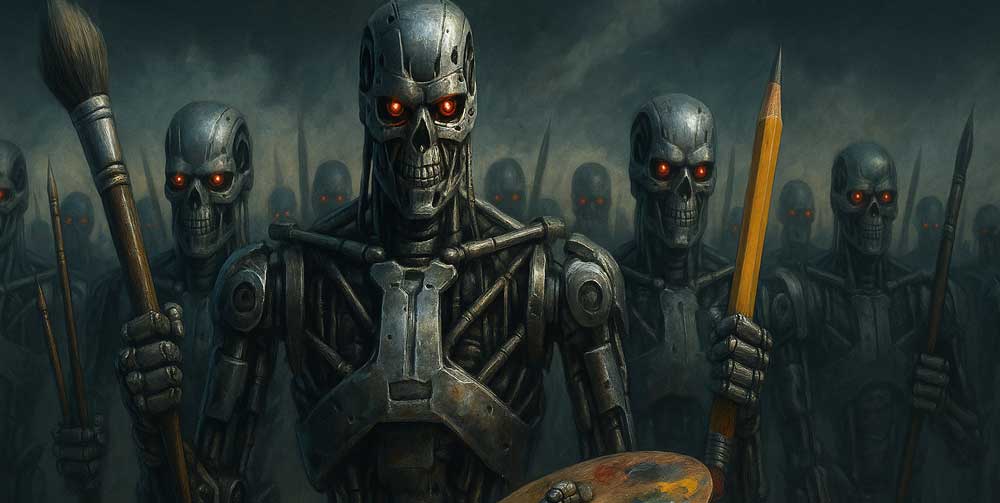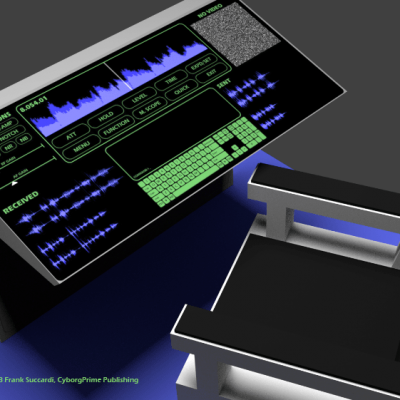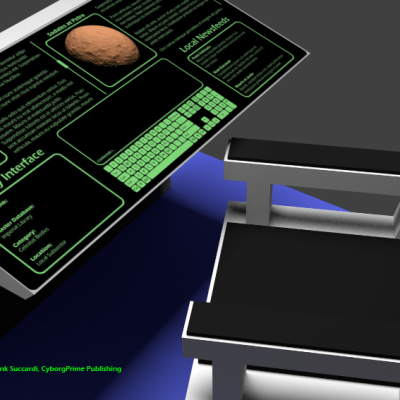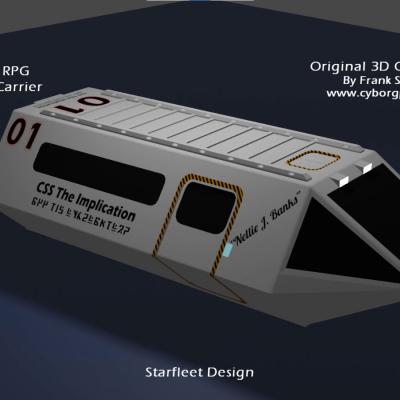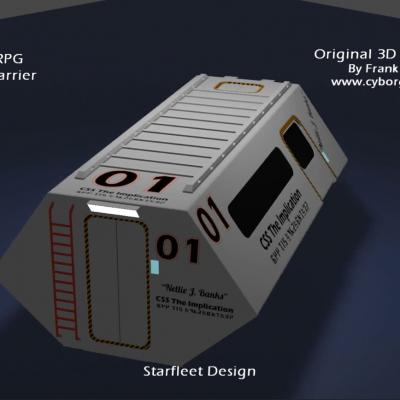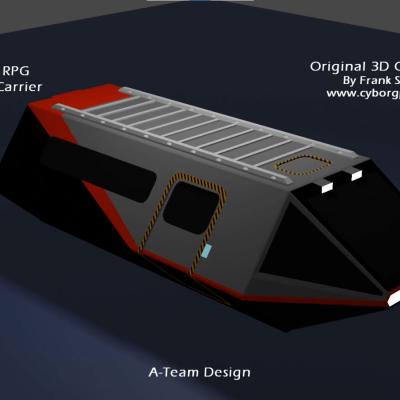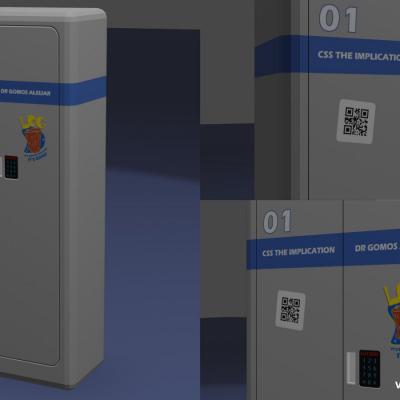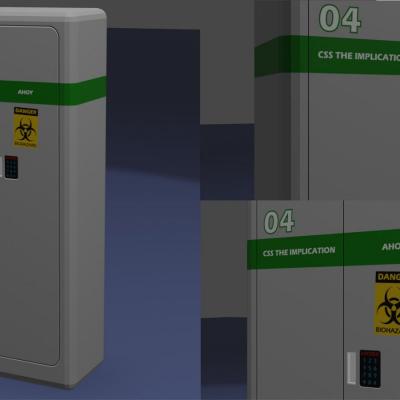AI art has become a lightning rod for debate, but much of that debate is built on myths and misconceptions.
A Note to My Readers: Understanding AI Art and the Nuance of Creation
AI art has sparked a lot of conversation, and understandably so. It's a rapidly evolving field that often touches on deeply held beliefs about creativity, ownership, and what it means to be an artist. This can lead to strong reactions, often fueled by misinformation or incomplete understanding.
It's easy to jump to conclusions based on headlines or snippets of information. I've seen a lot of anger and frustration directed towards AI art, driven by common misconceptions that just aren't accurate. Part of this misunderstanding stems from the inherent lack of transparency in many AI-generated images – it's often impossible for a viewer to tell the full story of its creation.
This FAQ aims to gently set the record straight. As an artist who uses AI as a legitimate and integral part of my creative process, I want to share my perspective and provide clear, factual answers to the most common questions and criticisms I encounter. My hope is to foster a more informed discussion, moving beyond misplaced anger to a clearer understanding of how artists like me are truly engaging with this powerful new tool.
Common Misconceptions about AI Art: FAQ
Q1: Is AI art just copying or plagiarizing existing human artwork?
No, AI art models learn patterns and styles from vast datasets to generate new, original creations, rather than directly copying or collaging existing images. My generative process is designed to produce unique outputs that are far removed from any source material, ensuring they're not mere reproductions or collages of other people's art. The contribution of any single artwork within a massive training dataset is so infinitesimally small that its individual elements are effectively dissolved and transformed. The AI learns general concepts, styles, and relationships, not memorizing specific images for reproduction.
Q2: Is AI art unethical because it's trained on uncompensated artwork?
This is a complex and highly debated topic. While some very large, base AI models may have been trained on publicly available internet data without explicit consent or compensation for every artist, the landscape is evolving. Companies like Adobe, for instance, actively pay artists for submissions used to train their AI models, ensuring ethical data sourcing and even offering IP indemnification for enterprise users of Firefly.
As an artist using AI, I actively try to avoid this ethical issue by using models from platforms like CivitAI. These models are often community-trained and can be built from publicly available, often curated, sources. This means a human element of selection and curation has gone into the training data, distinguishing it from indiscriminate, mass internet scraping. My choice reflects a conscious effort to use tools that align with more ethical sourcing practices, reducing the concern that my art is directly benefiting from uncompensated works.
Q3: Can you copyright AI-generated art??
Yes—if a human artist makes significant creative contributions, the work can be protected under U.S. copyright law. The law requires human authorship, and I meet that standard. When I create commercial work like book covers, commissions, or interior art, I’m not just typing a prompt and clicking “go.” My process involves:
- Multiple iterations and refinements
- Combining and compositing assets (often starting with my own hand-drawn or 3D work)
- Substantial post-processing in Photoshop or other tools
- Clear, directed creative intent and time investment
The AI is a tool—I’m the author.
My works are not public domain just because they involve AI. If you'd like to use something I've made, please ask for permission. Don't assume it's “up for grabs” based on how you think it was made.
It’s important to recognize that when viewing an AI-assisted piece, there’s no way to tell:
- What model was used (some, like Adobe’s Firefly, are trained on licensed stock art)
- What the training data was
- Whether the artist used their own source art as a base
- How much time went into editing or iterating
- Whether it’s 1% AI or 100% AI—or something in between
- How much actual human effort went into the piece
I typically use publicly available, curated 2–4GB Stable Diffusion models—not massive, indiscriminately scraped datasets. I avoid mimicking the style of other artists. My goal is to develop a personal AI art style that’s my own, not to imitate others.
At the end of the day, AI helps me do work that wouldn't be possible otherwise, especially as a solo creator. But the creativity, intent, labor, and vision? That’s all me.
Q4: Will AI art replace human artists?
No, AI art is a tool that augments human creativity, not a replacement. Human artists bring unique emotions, experiences, and personal vision that AI cannot replicate, using AI to explore new possibilities and streamline workflows. Using AI in my art process doesn't mean I lost my creativity or forgot my art training; it means I'm adapting and expanding my toolkit.
Q5: Does AI art lack creativity or emotional depth?
AI algorithms can be programmed to produce highly imaginative and innovative works that evoke emotions, just like human-created art, by exploring new forms and styles beyond human limitations. My input and curation are crucial in guiding the AI to achieve the desired creative and emotional outcomes.
Q6: Is AI art always a finished, high-quality product right out of the AI?
No. While AI can generate impressive images, raw AI outputs are rarely "finished" pieces. As a skilled artist using AI, I integrate AI-generated elements into my existing artistic workflow. For example, I often begin with my own hand-drawn art or 3D models as a foundational framework, or I might use AI to create a low-resolution concept, which I then resubmit for higher-resolution rendering. The final quality of my commercial art products almost always requires significant human intervention to fix common AI quirks like extra fingers, misaligned eyes, or other anatomical inconsistencies. Many aspects still demand a human touch to reach a professional standard; my commercial products don't feature raw images straight from the AI's initial output. My entire process, from initial concept to final polish, is a handcrafted creative artistic endeavor.
Q7: Am I "stealing" art if I use AI?
Accusations of "art theft" related to AI-generated works are often unfounded. It's rude and baseless to accuse me of art theft without concrete evidence. Generative AI models create new, unique images. If someone claims my AI art is stolen, they should be able to identify any copied elements in my output. The reality is, the AI's process transforms learned styles into entirely new creations, making direct copying extremely unlikely. Because the influence of any single piece of art in the vast training data is negligible, removing a specific artist's work from the dataset wouldn't demonstrably change the output of the model, further illustrating that individual works aren't being "copied" or "stolen."
Q8: Does AI art lack a "soul" or true artistic spirit?
This is a philosophical question often posed to AI art. If we assume that human-created art possesses a "soul" or inherent artistic spirit, then it logically follows that AI art, being trained extensively on countless works of human art, must absorb or reflect that "soul" in some capacity. The AI acts as a sophisticated lens through which the vast spectrum of human artistic expression is filtered and re-expressed in new forms, imbued with echoes of the very humanity it learned from. Think of it like baking: if a cake is made from flour, you can't logically claim there's no "flour" in the cake. Similarly, if AI art is made from the "flour" of human art, that essence remains.
Q9: Does AI spontaneously make art?
Absolutely not. AI doesn't spontaneously make art. It requires my direction, my input, my guidance, and countless iterations. As an artist who uses AI, I spend just as much time creating my works, from conceptualizing and prompting to refining and post-processing. The difference is, the AI tool can help elevate the quality of my output or explore new visual avenues, allowing me to achieve results that might be impossible or prohibitively time-consuming with traditional methods. For instance, I can now create a much higher quality book cover in the same amount of time.
Q10: Does AI art make art creation more accessible or "democratize" it?
Yes, for many people, AI art tools significantly lower the barriers to artistic expression. They enable creators to produce visually compelling works—like book covers or illustrations—without requiring years of traditional training, expensive materials, or specialized physical dexterity. This empowers a broader range of individuals, including hobbyists, independent authors, and people with physical limitations, to bring their creative visions to life. AI acts as a powerful enabler, expanding who can participate in and contribute to the world of art.
Q11: Do AI artists just mimic existing artists or styles?
Not necessarily. While AI models can generate art in the style of existing artists if specifically prompted, I actively choose to avoid invoking the names or styles of other artists or public figures in my prompts. This is a deliberate creative choice aimed at developing my own unique personal AI style and ensuring my work doesn't resemble anyone else's. My goal is artistic originality and establishing a distinct aesthetic identity, not imitation.
Q12: Is using AI to create art "faking it" or a "participation trophy mentality"?
Absolutely not. This objection often stems from a misunderstanding of how AI is used in a professional artistic workflow. As I've explained throughout this FAQ, AI doesn't spontaneously make art; it requires significant human direction, skill, and creative input at every stage.
To suggest that using AI is "faking it" or implies a lack of talent fundamentally misunderstands the artistic process. When I use AI, I am not trying to "fake" traditional skills I don't possess. Instead, I am:
- Leveraging a powerful tool: Just as a photographer uses a camera, or a digital painter uses software, AI is another instrument in an artist's toolkit. My goal is to produce high-quality, original art, not to cheat or diminish the value of other artistic mediums.
- Investing my time and skill: My process involves extensive conceptualization, prompt engineering, iterative generation, selection, and often hours of manual post-processing and refinement in software like Photoshop (as detailed in Q6 and Q3). This is a demanding creative endeavor that requires artistic training, an eye for composition, color, and detail, and a deep understanding of the tool's capabilities.
- Focusing on the final vision: My aim is to create compelling visual narratives or beautiful images that serve my creative needs, such as book covers. The method, while innovative, is secondary to the artistic outcome and the effort invested.
Ultimately, judging art based solely on the tools used, rather than the creativity, effort, and final output, is a narrow perspective. My use of AI is about expanding my creative capabilities and achieving a higher quality result, not seeking unearned glory or engaging in a "participation trophy mentality." My success comes from my vision and dedication, just as any artist's does.
Q13: If AI art is "fake," then why should anyone support it or pay for it?
The notion that AI art is "fake" or "soulless" misses the point of its creation entirely. As I've detailed throughout this FAQ:
- It's not "fake": My art created with AI is a legitimate form of digital art, produced through a process involving my creative intent, artistic decisions, and significant hands-on work. It's no more "fake" than digital painting is "fake" compared to oil painting, or photography is "fake" compared to drawing. The tool changes, but the human artistry remains.
- It's not soulless: As discussed in Q8, if human art carries a "soul," then AI, trained on the vast corpus of human creativity, reflects and re-expresses that spirit. More importantly, my soul, my vision, and my passion are poured into every piece I create, regardless of the tools I use. The emotional depth and aesthetic appeal come from my artistic choices and curation.
- The market is deciding: The idea of "letting the market decide" is precisely what's happening. I offer my work, and if it resonates with buyers who value its quality, originality, and the vision behind it, then it finds its place. The value of any art, whether created with traditional brushes or cutting-edge AI, is ultimately subjective and determined by its audience. This perspective acknowledges the market's role, but also challenges the idea that value should be dictated by a prejudiced view of the tools rather than the art itself.
Q14: Are you just generating random images and selling them?
No—and that assumption misses the point entirely. I’m a credentialed artist with an art degree, years of hands-on design experience, and a production history that includes over 30 Traveller-related titles, from starship deck plans to GM tools to educational products. This isn’t a “money printing operation”—it’s the result of decades of creative work and refinement.
AI helps me produce more, not care less. Every piece I create undergoes a rigorous process of conceptualization, prompting, selection, post-processing, and final polish. I use AI as one tool in a broader pipeline that often includes my own hand-drawn art or 3D models, Photoshop edits, and alignment with specific worldbuilding and product goals. It’s guided, iterative, and deliberate—never random or fire-and-forget “slop.”
I’ve also earned a Top Contributor badge in the Dungeons & AI community (over 336,000 members) and All-Star Contributor badge in the Traveller RPG AI Tools group (over 1,500 members). Both communities are known for peer-reviewed, high-quality work and thoughtful discussion around AI use in creative projects. Earning that recognition reflects thousands of positive contributions and meaningful interactions—rooted in quality, not quantity.
Reducing AI-assisted art to “just pushing buttons” or “cheating” ignores the skill, training, and effort required to create at a professional level. My goal is—and always has been—genuine artistic expression. The tools evolve, but the commitment to quality stays the same.
Q15: Does a trained artist have an advantage when using AI art tools, and how can one tell the difference in AI art creation?
Absolutely. While AI art tools can produce good images for anyone, my background as a credentialed artist with a long history in art and an art degree provides a significant advantage. It's not just about typing words; it's about speaking the "vocabulary of art" to the AI.
My training allows me to:
- Formulate more effective prompts: I understand concepts like composition, lighting, color theory, perspective, and artistic movements. This allows me to craft prompts that are far more precise and expressive, guiding the AI to understand my artistic intent and what I envision in my mind's eye.
- Critically evaluate outputs: My artistic eye helps me quickly discern high-quality outputs, identify errors or areas for improvement, and refine images to meet professional standards, a skill less trained individuals might not possess.
- Integrate AI seamlessly: I can strategically weave AI into complex artistic workflows (as described in Q6 and Q3), using it for specific tasks like generating textures or variations while maintaining overall creative control.
In essence, my formal art education and practical experience allow me to leverage the AI's capabilities more effectively, resulting in images that are not just "good," but are a more accurate and higher-quality manifestation of my unique artistic vision. The tool is powerful, but my expertise amplifies its potential.
It's also important to acknowledge that the user cannot easily tell the full story of an AI-generated image just by looking at it. This is a critical point of nuance in the broader discussion about AI art:
- Training Data Source: As exemplified by Adobe Firefly, which is trained on licensed Adobe Stock content and public domain images, different AI models have vastly different ethical and legal training datasets. Users often can't ascertain this by looking at the final image. My own practice uses curated, publicly available models (roughly 2 GB) for Stable Diffusion, often with my own art as the underlying framework, which distinguishes my process from models trained on indiscriminately scraped internet data.
- AI Program and Level of AI Use: Whether an image was generated with 1% AI or 100% AI, or which specific programs were used, is not visually apparent. My work frequently involves using AI for low-resolution concepts that are then heavily edited by hand, or building upon my own hand-drawn or 3D art. This makes it a truly handcrafted creative artistic endeavor from start to finish, where AI tools are just one part of a complex process.
- Creative Effort and Time Invested: The hours of refinement, iteration, and post-processing involved in creating a high-quality AI-assisted image are invisible to the viewer. There is no "easy button," and the final product is the culmination of significant creative effort and time.
- Artistic Intent vs. Imitation: As stated in Q11, my goal is to develop my own unique AI style and not to mimic other artists. This creative choice and artistic intent are not immediately obvious to an observer but are fundamental to my ethical and artistic approach.
This inherent opacity means that judging AI art requires a deeper understanding of the artist's process and choices, rather than just a superficial glance. My goal is to be transparent about my methods and demonstrate the genuine artistic endeavor involved.
Final Thoughts
AI art is a powerful tool—but it's still just a tool. The results depend on the person behind the process.
I’m not asking everyone to love AI art. But I am asking people to understand how it actually works, and how artists like me use it not to cheat, but to create. This isn’t about replacing humans—it’s about expanding our creative potential.
Thanks for taking the time to learn.
—Frank Succardi
CyborgPrime Publishing
Traveller Content Creator | Multimedia Artist | Solo Indie Developer
🔔 Want to See More Behind the Scenes?
If you’re curious about how I use AI in real-world creative projects—like Virtual GM, my upcoming games, or AI-assisted book cover workflows—join my newsletter for exclusive updates, early access previews, and deep dives into my creative process.
No hype. No spam. Just honest insights, new releases, and tips for creators navigating the intersection of art, AI, and indie production.
👉
